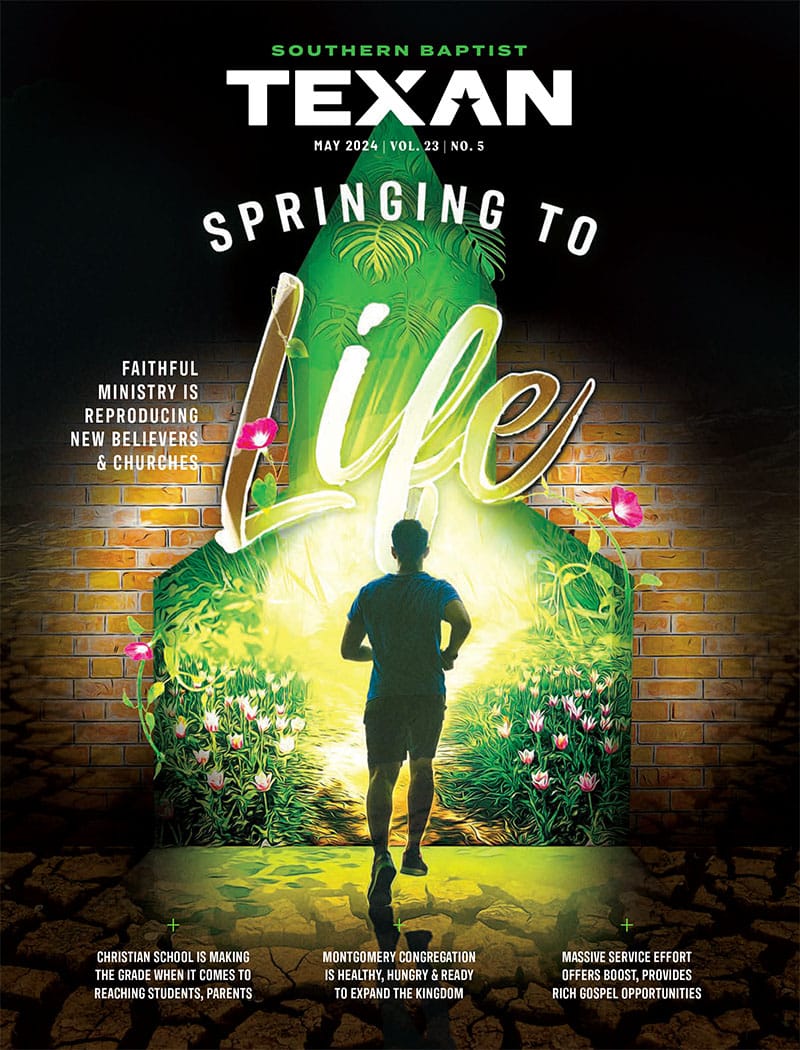At the Feb. 25 Cooperative Program lunch during the Southern Baptists of Texas Convention’s annual Empower conference, SBC Executive Committee president Ronnie Floyd highlighted the over $19 billion given by Southern Baptists since the inception of the Cooperative Program in 1925.
“Reaching every person for Jesus Christ in every town, every city, every state and every nation: that is what the Cooperative Program is all about,” he said.
“We believe one day in the near future that there will be a multitude from every language and people and nation, knowing and worshipping our Lord Jesus Christ,” he continued. “Yet we have this looming problem before us today that separates us from that grand vision that will one day occur in heaven.”
Floyd pointed out that at least 4.5 billion of the world’s approximate population of 7.7 billion are “unreached,” and that less than two percent of those are Christians.
“Southern Baptists had better ask ourselves how in the world we can rationalize before the judgment seat of Jesus Christ that we were too occupied with other things than the words of our Lord when he said in Mark 16:15, ‘Go into all the world and preach the gospel to all creation.’”
The Cooperative Program’s inception was a response to Southern Baptists’ desire to see the gospel go to the ends of the earth. Floyd indicated that the health of the CP was directly tied to the SBC’s ability to fulfill the Great Commission at a time when so many people have never heard the gospel.
“People need Jesus, and people need Jesus now,” he said. “We must get back to the main street of evangelism and missions in our churches, our state conventions and our Southern Baptist Convention.
“With our 47,500 churches, we can do more together than we can ever do by ourselves. And this is why in 1925 the Southern Baptist Convention created the Cooperative Program. The Cooperative Program is the financial fuel to reach every person for Jesus Christ in every town, every city, every state and every nation. And when your church gives to the Cooperative Program it doesn’t matter what size of a church you have or the size of the town in which you dwell or you minister, you are able to partner with a vision that is much bigger than your own,” Floyd said.
“And when your church gives through the Cooperative Program of the Southern Baptist Convention,” he added, “you are investing in reaching people for Jesus Christ regionally, state-wide, nationally and internationally.”
Floyd pointed out that the Southern Baptists of Texas Convention has always made the Cooperative Program a priority, forwarding more than $245 million of the roughly $439 million given by its churches since the SBTC’s inception in 1998. Currently, the SBTC forwards 55 percent of its total receipts to the CP, placing it first among state conventions in terms of giving percentage.
“And this means at least 55 percent of your Cooperative Programs gifts have been forwarded outside of Texas for the nations for Jesus Christ,” Floyd said. “Southern Baptists of Texas, you may have already taken that for granted, you have forgotten. But that is pace-setting, and it’s amazing.
“We are in the midst of our 95th year of giving through the Cooperative Program,” he added. “From 1925 through September 30th, 2019, our Southern Baptist churches have given $19,113,902,211 through the Cooperative Program for the purpose of reaching the world with the gospel of Jesus Christ.”
Of this total, Floyd pointed out, state conventions have forwarded to the national convention over $7.2 billion. This amount that has been distributed to convention entities such as the International Mission Board and North American Mission Board, as well as to the six Southern Baptist seminaries.
“The more monies out 47,500 churches give through the Cooperative Program,” he said, “the more we can extend the gospel throughout the world.”
Floyd said that one of the reasons he believes God has put him in place as president of the Executive Committee is “to try to move us forward in a unified, Great Commission vision that every church can grasp, regardless of their size. That every association can grasp because they understand how important it is. That every state convention can get a hold of and believe in deeply. And that we can rally our leaders from all parts of the globe, including our missionaries, towards this grand, Great Commission vision.”
He went on to debut “Vision 2025,” a five-year vision which the trustees of the Executive Committee had approved one week earlier and will serve as the basis for his leadership over the next half-decade.
“I’m speaking about a unified, Grand Commission vision that unites us,” he said. “It has simplicity and clarity, something that every one of us can get our arms around. But it’s all built off this grand call, and I believe it’s the grand call of the Lord Jesus in all of his commission passages you find in the text. Vision 2025 is a call to reach every person for Jesus Christ in every town, every city, every state and every nation.
“Sending missionaries is the heart of the Southern Baptist Convention. That’s who we are. The more missionaries we can send,” he said, “the more people we can tell about the powerful love of Jesus Christ.”










